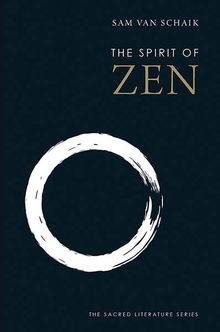Leading Buddhist scholar Sam van Schaik explores the history and essence of Zen, based on a new translation of one of the earliest surviving collections of teachings by Zen masters. These teachings, titled The Masters and Students of the Lanka, were discovered in a sealed cave on the old Silk Road, in modern Gansu, China, in the early twentieth century. All more than a thousand years old, the manuscripts have sometimes been called the Buddhist Dead Sea Scrolls, and their translation has opened a new window onto the history of Buddhism.
Both accessible and illuminating, this book explores the continuities between the ways in which Zen was practiced in ancient times, and how it is practiced today in East Asian countries such as Japan, China, Korea, and Vietnam, as well as in the emerging Western Zen tradition. (Source: Yale University Press)
| Citation
|
Schaik, Sam van. The Spirit of Zen. The Sacred Literature Series. New Haven, CT: Yale University Press, 2018.
|
|
|
|
Preface
PART I Introducing Zen
1 The Practice of Zen
2 Zen and the West
3 The History of Zen
4 The Lost Texts of Zen
5 Early Zen Meditation
PART II The Masters of the Lanka
6 Manuscripts and Translation
7 Jingjue: Student of Emptiness
8 Guṇabhadra: Introducing the Laṅkāvatāra
9 Bodhidharma: Sudden and Gradual
10 Huike: The Buddha Within
11 Sengcan: Heaven in a Grain of Sand
12 Daoxin I: How to Sit
13 Daoxin II: Teachings for Beginners
CONTENTS
14 Hongren: The Buddha in Everything
15 Shenxiu: Zen in the World
Notes
References
Index
- Jìngjué (淨覺), comp. Léngqié Shīzī Jì (楞伽師資記) (Masters of the Laṅkā). T2837, 85: https://21dzk.l.u-tokyo.ac.jp/SAT2012/ddb-bdk-sat2.php?mode=detail&useid=0310_.
The wikipage input value is empty (e.g. <code>, [[]]</code>) and therefore it cannot be used as a name or as part of a query condition.

